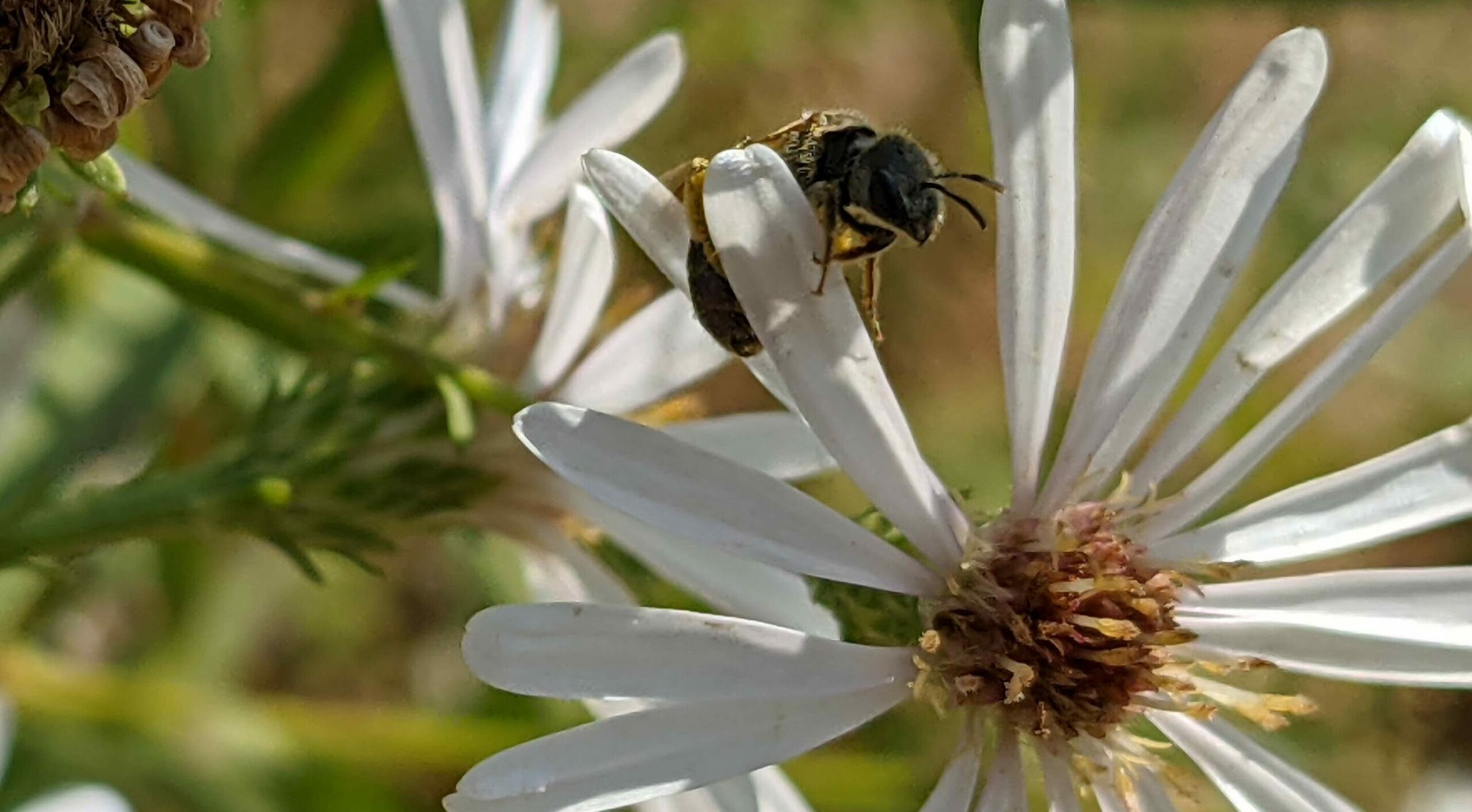I have been so grateful for the opportunity to assist Jen Hayes with her nativar research project. For the past year and a half, I have learned so much in the world of plant and pollinator relationships. One of the most valuable things I have learned, which I use every day in my own garden, is how to quickly identify bees. In the field, we observe each flower plot for five minutes and record the different things that visit. Being able to identify a fly from a bee, or a bee from a wasp is very important in order to obtain accurate data. I wanted to share the process we use to quickly identify bees in the field and hopefully answer some questions you may have had about what was buzzing in your garden.

Once the sun has risen and the chill of the morning has left, bees begin their foraging routine. Male bumblebees, out foraging too late, emerge from the layers of Zinnia flowers. Hundreds of bees possibly pass through your garden in a single day, from flower to flower, collecting pollen and nectar. But what are they? Are they native? Are they helpful in the garden? These are all questions I have whenever I see something buzzing on the mint, exploring the flower patch, or pollinating the tomatoes.
The first things I always look for are the antennae and the number of wings. The flies that are most often confused with bees have short, almost non-existent antennae, whereas bees will have noticeable, segmented antennae. The wings are also something to look: flies only have one pair of wings and bees have two, the forewings and hindwings. Be sure to look closely! There are flies known as hoverflies or syrphid flies that have incredible mimicry adaptations. Look at these two insects on this butterfly bush. Although almost identical, you can see the top insect does not have noticeable antennae. That’s because it is a honey bee mimic!

If you have established that it is a bee and not a fly, there are other things to look for to identify the bee to a more specific taxonomic level. The coloration of the bee could help if it is green or red, but there are many bees that have different variations of black and white. What I like to look for next is the pollen baskets, also known as the corbiculae. Megachilidae bees carry the pollen on the underside of their abdomen, like bright yellow furry bellies. Another distinguishing factor for Megachilidae bees is how they fly. The abdomen of the bee will usually curl upwards while in flight. Mellisodes bees carry the pollen on their hind legs but the baskets are dramatically bigger than honeybees or bumbles. We like to think of them as pollen pants! Mellisodes bees are also known as long-horn bees because of their disproportionately long antennae.
If the bee does not have any special coloration or noticeably different corbiculae, it could be one of many other genera we have in Oregon. Halictidae bees range in size from the tip of a pen to the size of a penny. They are usually black or black and white and are VERY difficult to distinguish in the field. There are details we have to look for in the lab such as the number of “panels” in the wings or if they have one versus two sub-antennal sutures.
The other bees we see while doing research include wasps, honeybees, and bumblebees. There are so many variations of Bombus here in Oregon it is almost like a scavenger hunt. Because of all the color and striping variations, we use the PNW Bumblebee Atlas to help us identify species in the field.







